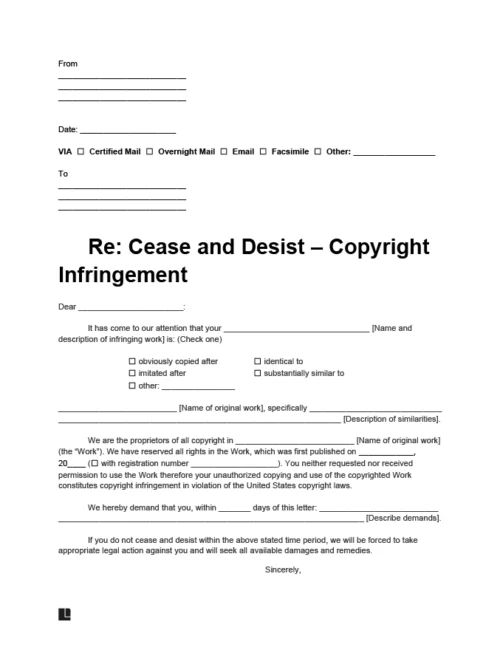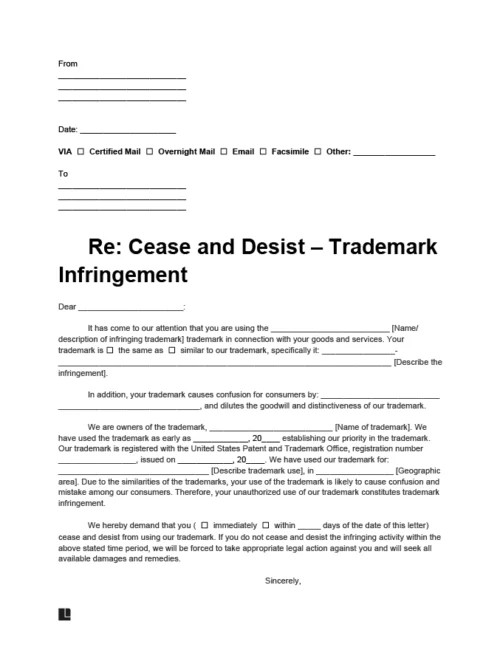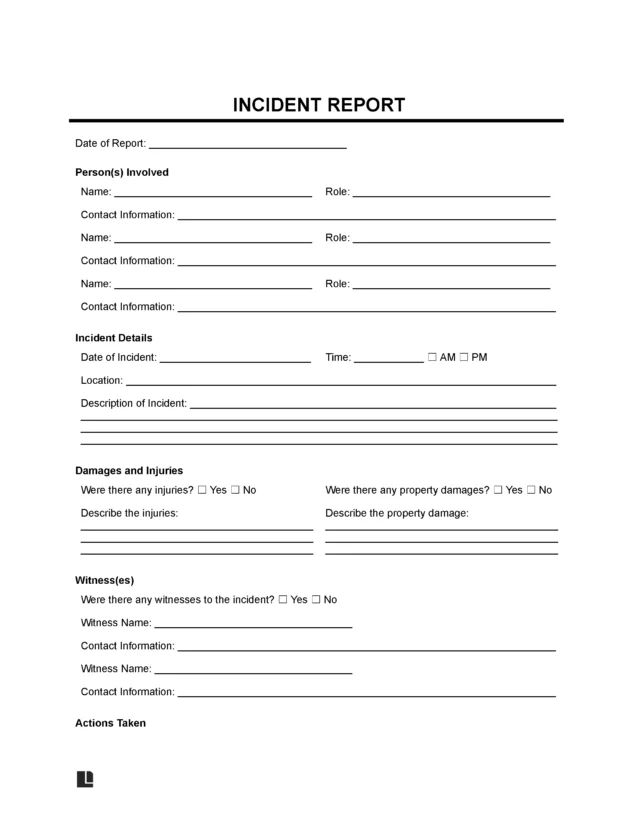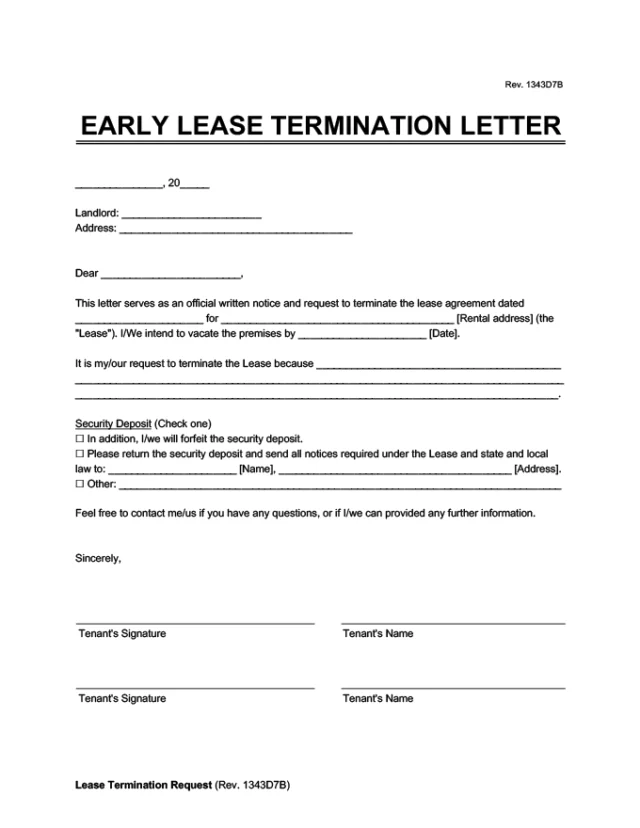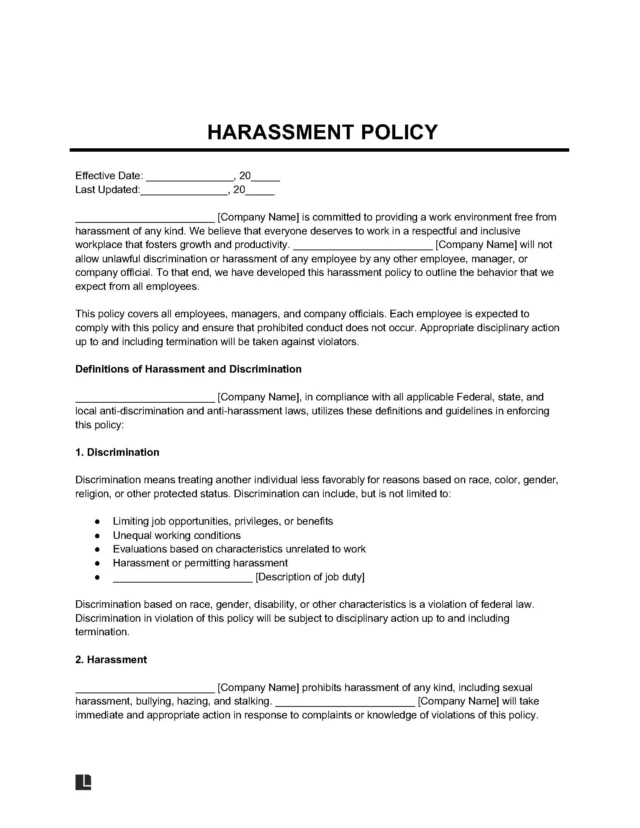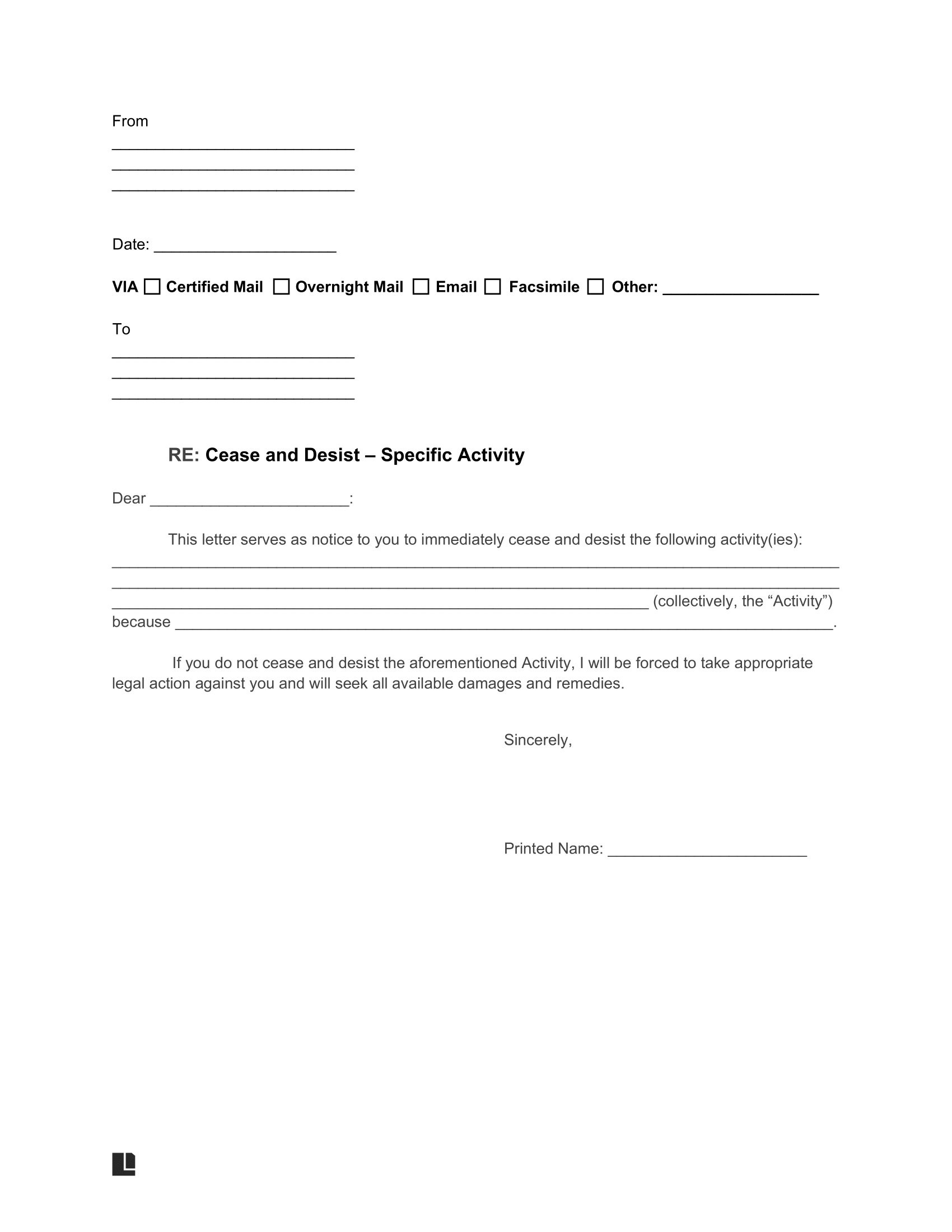Cease and Desist Letter – By Type
If you’re dealing with neighbor harassment, intellectual property theft, or a contract dispute, you can use the customizable cease and desist letter below. Each template is easy to fill out and helps you take control of your situation.
If someone blatantly copies, steals, or imitates your original work or website, demand that they either provide proper credit or stop immediately
Copyright Infringement
Use if a debt collection agency is overwhelming you with excessive phone calls and you want them to stop
Debt Collection
Use if someone or a business is infringing on your trademark to explain the harm and demand they stop using it
Trademark Infringement
Use if someone is slandering or libeling you or your business, and you want to demand they stop making those claims
Defamation
Use this letter if someone is disclosing confidential information about you or your business after signing an NDA, and you want to demand that they stop
Violation of NDA
What Is a Cease and Desist Letter?
A cease and desist letter is a written warning sent to someone accused of wrongdoing. It explains what happened and tells them to stop the behavior immediately. The letter also warns that legal action may follow if they don’t.
It doesn’t have to come from a lawyer; anyone can write and send a cease and desist letter. While this document isn’t legally binding, it serves as a clear warning that you intend to protect your rights. If the issue goes to court, the letter can be used as evidence that the person was notified and refused to comply.
What Are the Grounds for a Cease and Desist?
You can send a cease and desist when someone’s behavior violates your rights or causes measurable harm. Common grounds include intellectual property infringement, harassment or stalking, defamation, contract breaches, privacy violations, and improper debt collection practices. These situations give you a legal basis to demand that the person stop before you escalate the issue.
If you’re dealing with unpaid money or broken agreements, you may also need one of these templates:
How to Write a Cease and Desist Letter
A cease and desist letter needs to be clear, specific, and professional. Your goal is to explain the problem, identify who’s involved, and state what must stop. Make sure to:
- Include your name, address, and contact details
- Add the recipient’s full name and address
- Describe the behavior or action that must stop
- Explain when and how it happened
- Demand that it stop immediately or give a specific deadline for compliance
- Note possible legal consequences if it continues
- Sign and date the letter
Keep the tone calm and direct. A well-written letter shows you’re serious about protecting your rights and gives the other party a chance to resolve the issue before it escalates.
According to the American Bar Association, cease and desist letters can become public. When that happens, public reaction can shape how people perceive you or your brand.
Momofuku learned this the hard way after facing backlash for trying to force other brands to stop using the term “chile crunch.” You can avoid that kind of fallout by sending a cease and desist only when the issue clearly warrants it.
How to Send a Cease and Desist Letter
Certified mail is the most reliable way to send a cease and desist letter because you get proof of delivery. If you prefer another method, choose one that still confirms the letter reached the right person. Options include:
- A courier or process server for hand delivery
- Verified email for electronic proof of receipt
Keep the return receipt as evidence of who signed and when. Avoid regular or untracked mail since you won’t have any record the letter arrived.
Cease and Desist Letter Example
Here’s a cease and desist letter example for a privacy violation. It follows the template format and includes realistic details to show how a completed letter might look. Use it to see how to state the issue clearly and make a firm, professional request for the behavior to stop.
From
Maya Patel
455 Cedar Lane
Atlanta, GA 30309Date: October 10, 2025
VIA ☑ Certified Mail ☐ Overnight Mail ☐ Email ☐ Facsimile ☐ Other: ____________
To
Evan Brooks
92 Magnolia Drive
Savannah, GA 31401RE: Cease and Desist – Specific Activity
Dear Evan Brooks:
This letter serves as notice to you to immediately cease and desist the following activity(ies):
Sharing my private photos and personal information online without my consent (collectively, the “Activity”)
because these actions violate my privacy and cause emotional and reputational harm.If you do not cease and desist the aforementioned Activity, I will be forced to take appropriate legal action against you and will seek all available damages and remedies.
Sincerely,
Maya Patel
Printed Name: Maya Patel
Sample Cease and Desist Letter
Use the cease and desist letter sample below to see what a completed version looks like. It follows the same structure as our editable cease and desist letter template, making it easy to fill in your own details. You can download it in PDF or Word to customize and send when you’re ready to take action.



